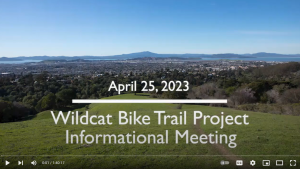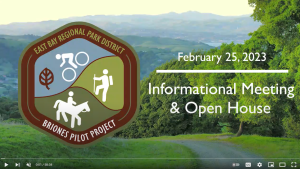The Oakland Hills Firestorm | Trapped by the fire


Getting out turned out to be impossible. Wilson tried to drive out on Marlborough Terrace, the way he had come in, with McCormick and Rosario aboard. But all the houses were on fire, telephone poles were gone, electrical wires were down. You couldn’t see more than 20 feet. Rounding a corner they encountered a transformer about the size of a refrigerator, suspended by power lines five feet above the road, bobbing slowly up and down.
Wilson backed up a block and a half on a winding road. To turn around, he had to drive into a burning carport.
Following Wilson in his Park District pickup truck with Goe aboard, Nichols had to turn using the same burning carport. At one point two Oakland firefighters jumped in the back of Nichols’ truck, then jumped right out again when they saw the diesel fuel cans, thinking they were full. There was so much smoke that Goe asked, “Will this engine run without oxygen?”
“We were thinking, ‘We might have cut this a little too close,’” Nichols remembers.
All five Park District firefighters ended up at a wide spot on Buckingham Boulevard near the Tunnel Road intersection. There they joined Oakland Fire Capt. Jeff Davis, eight or nine other Oakland firefighters, two civilian volunteers and six local residents who had not been able to escape.
At that spot they fought the flames for several hours. There was fire all around. Falling power lines sparked and flashed in the smoky darkness. Houses and garages in that hillside neighborhood were up on pillars. As the supports burned through, they could hear garage contents including refrigerators, washing machines and automobiles crashing down the steep slopes.

The firefighters were able to save two houses at the intersection. They had a water supply from a working hydrant for an hour or so. Eventually two Oakland firefighters and a woman appeared out of nowhere. The three had taken refuge from the fire in a nearby swimming pool, from which the firefighters now drew more water. The woman’s house was destroyed.
The situation was dire. Winds were so strong that water from hoses would be blown aside before it reached flames. On top of everything else, an alarm in one of the houses was ringing incessantly. Goe finally went in with an axe and chopped away the electric wires.
“The heat was incredible,” Goe said. He remembered lying on his back in the street, holding a hose, with his water-soaked pants steaming.
Rosario, Goe and McCormick cleared away landscaping and jute netting from one of the two houses, which was vacant, then set a backfire to save it without use of water, because at that point they didn’t have any. Once the house was secure, they sheltered the civilians in it.

Nichols gave full credit to Capt. Davis. “Talk about a battlefield leader,” he said. Davis stayed calm and focused, directing the firefighting.
After the fire passed over, Nichols and Davis drove down Tunnel Road, looking for a way out. They had to use a winch to clear the road of debris that had crashed down the hillsides. At Charing Cross Road they discovered the burned body of a woman. They covered her and placed her in Nichols’ truck. Farther down, there was a dead man. They took both bodies to a temporary morgue at the high school on Broadway.
Wilson, Goe, Rosario and McCormick drove down Tunnel Road, too. The apartments at the bottom next to Highway 24 were still burning, with nothing left but foundations. They drove onto Highway 24, which was deserted except for a Caltrans vehicle parked in the middle of the freeway, fully ablaze.
As they headed East through the Caldecott Tunnel, Goe could look back and see smoke and flames. The tunnel took a turn, and his view was obscured. “It was just like the gates of hell closing,” Goe said. Ahead of them the sky in Orinda was blue and clear.
Continued... >> You're alive!



